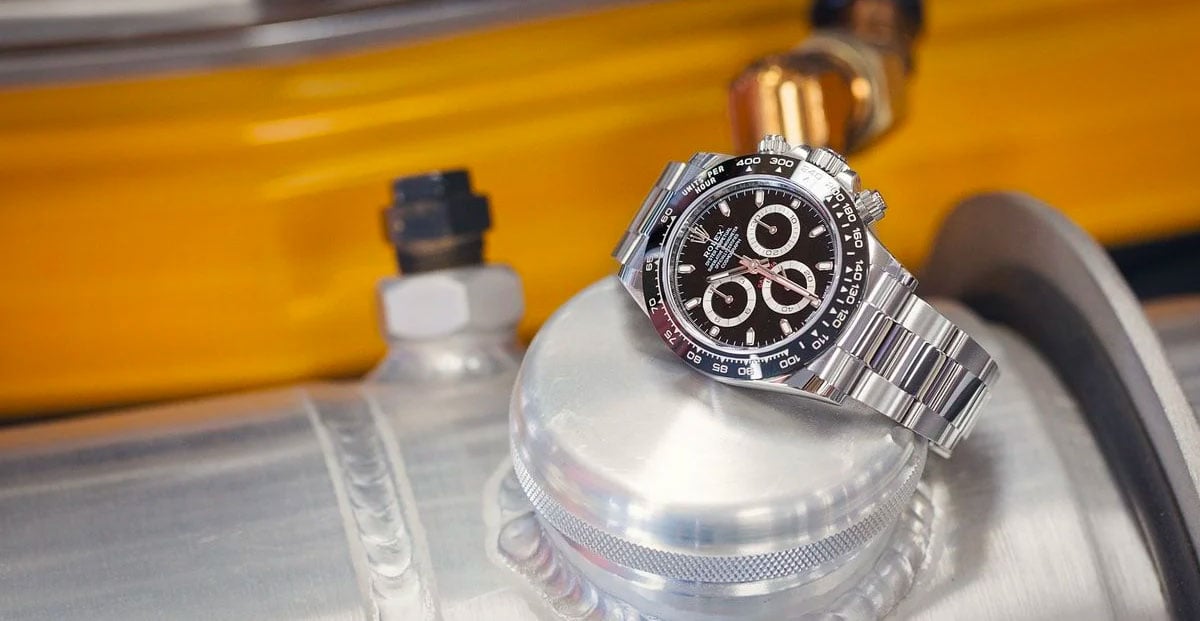Rolex Daytona vs Omega Speedmaster
Rolex Daytona vs. Omega Speedmaster
You don't really need to have a huge interest in horology to know the names Omega Speedmaster and Rolex Daytona. In terms of recognition, the two brands and their respective flagship chronographs are at the absolute pinnacle of public awareness. But while both may have been designed initially to do the same job and were released within just a few years of each other, the pair have evolved quite differently over the last several decades.
The Omega Speedmaster and the Rolex Daytona have been duking it out for more than a half century now, and each has built up a devoted camp of followers. However, as far as the battle of the chronographs is concerned, which is better? Is there, in fact, a winner out of the two?
Alike in so many ways, yet worlds apart when it comes time to pay for them, the fight may never be settled - but we're not going to let trifling details like that stop us. Read on below for our take on the great Omega Speedmaster vs. Rolex Daytona debate.
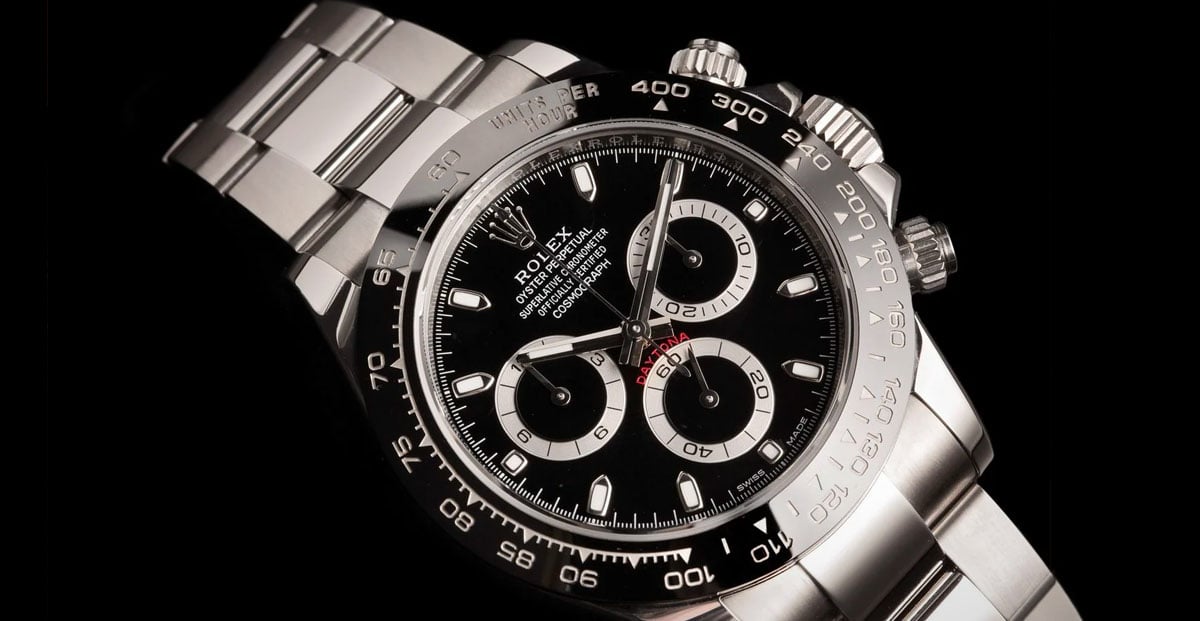
Rolex Daytona vs. Omega Speedmaster Legacy
Universally beloved as both watches now are, it wasn't always this way - for one of them at least. Omega struck first with the Speedmaster, released in 1957 alongside two other models which together made up their Professional Collection; the Seamaster 300 dive watch and the antimagnetic Railmaster.
It was the Omega Speedmaster that first moved the tachymeter scale onto the bezel rather than running it around the dial, freeing up significant space and lending the sort of legibility rarely seen on a chronograph up until that point. Inside that inaugural reference, the CK2915, beat the beloved Caliber 321, a manually wound, 18,000vph movement designed and built by Omega in conjunction with Lemania.
Clearly made for the thrills of the racetrack, the Speedmaster strengthened the brand’s status as the makers of fine chronographs as well as the leaders in exacting precision - a reputation they had gained since becoming official timekeepers of the Olympic Games in 1932. However, the best was yet to come for both maker and model in terms of public perception.
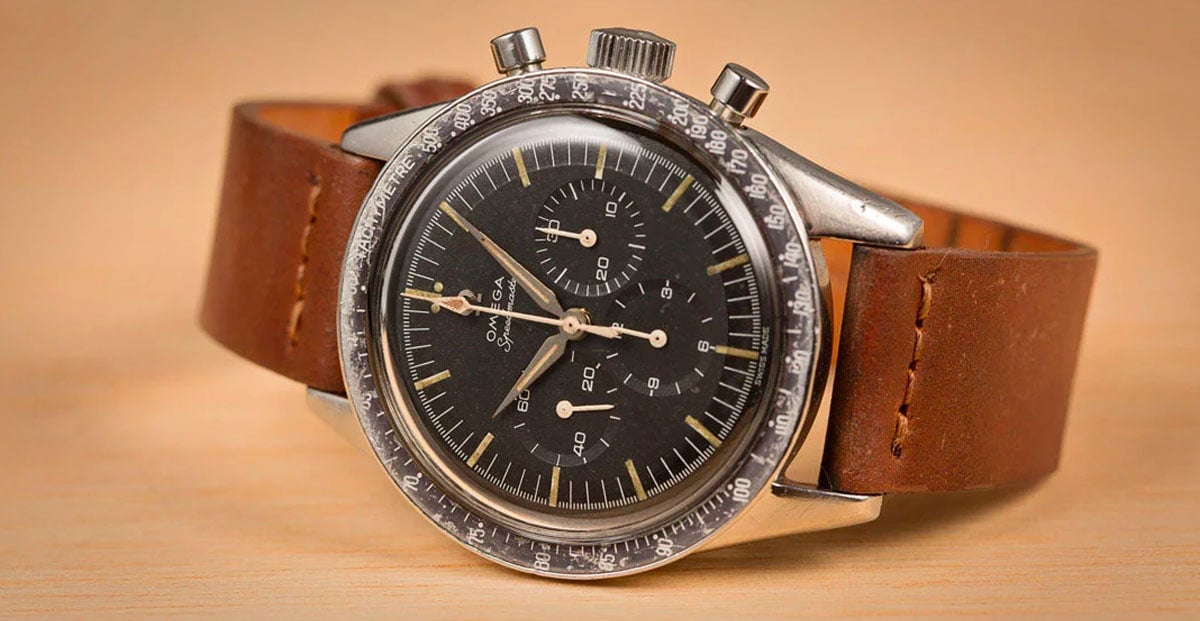
Starting in 1962 with the second generation ref. 2998, personally owned by astronaut Wally Schirra, there has been an Omega on every manned U.S. space flight in history. The Speedmaster was the only piece to survive NASA's battery of brutally destructive tests, becoming the first certified and flight-qualified watch of the agency in 1965.
Four years later, it was the Speedy that boldly went one small step further when it became the first watch to be worn on the surface of the moon, strapped to the outside of Buzz Aldrin's space suit. That reference, the 105.012 won the Speedmaster the nickname of Moonwatch, which is what it has been known as ever since.
Since then, the Speedy has splintered into an enormously diverse range of models, including manually wound, automatic, and quartz-powered examples. Impressive complications have been added, including perpetual calendars, and appropriately enough, moonphases. In all, there are hundreds of different Speedmaster models to choose from, both modern and vintage, not even counting the unending litany of special and limited editions. However, despite the range of variation present within the Speedmaster collection, Omega still produces a version that is near identical to the models that first went to the moon.
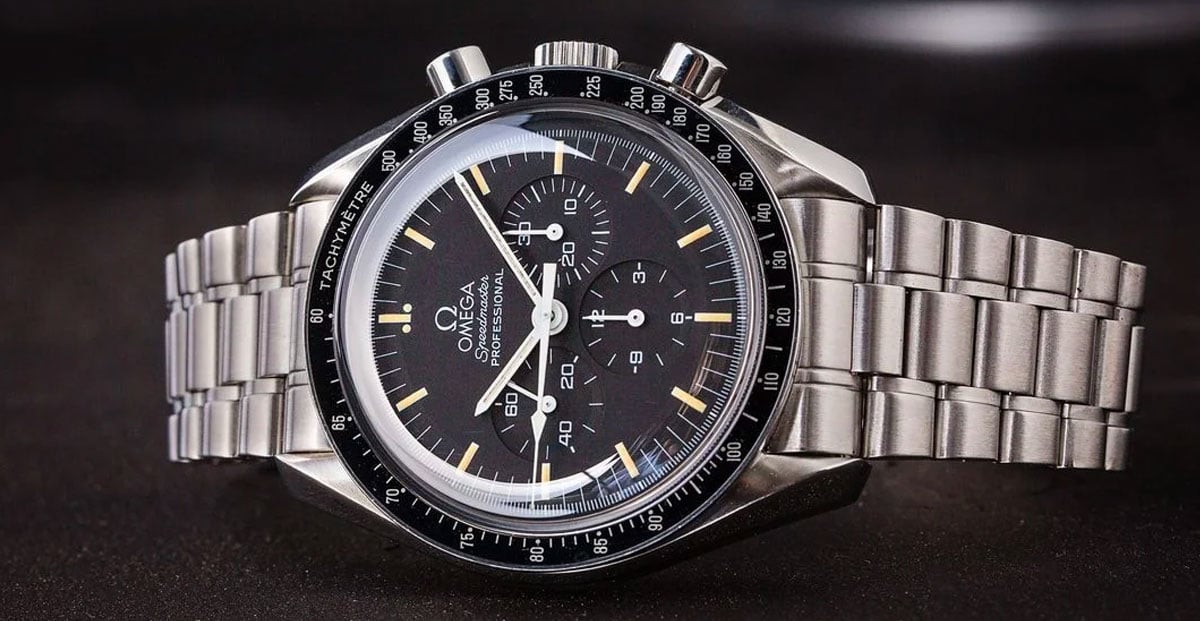
However, this success story was not the same for the Rolex Daytona. It would be interesting to know how successful Rolex's effort might have been if it had been launched first, but when it finally hit the stands six years later in 1963 it didn't make quite as much of a splash. Rolex's offering also had its tachymeter scale on its bezel, the sub-dial trio was the same, and it was similarly driven by a manually-wound movement.
At the time of its launch in 1963, Rolex and Omega were very much neck and neck in popularity, with Omega even overtaking their rivals in many countries. The Rolex Daytona was built specifically to compete with the Omega Speedmaster and to try and claw back some of the ground that Rolex had lost. While it too was targeted at the glitzy world of motorsports, and Rolex was to become the main sponsor of the Daytona International Speedway that year, there was another contest that was captivating the entire world.
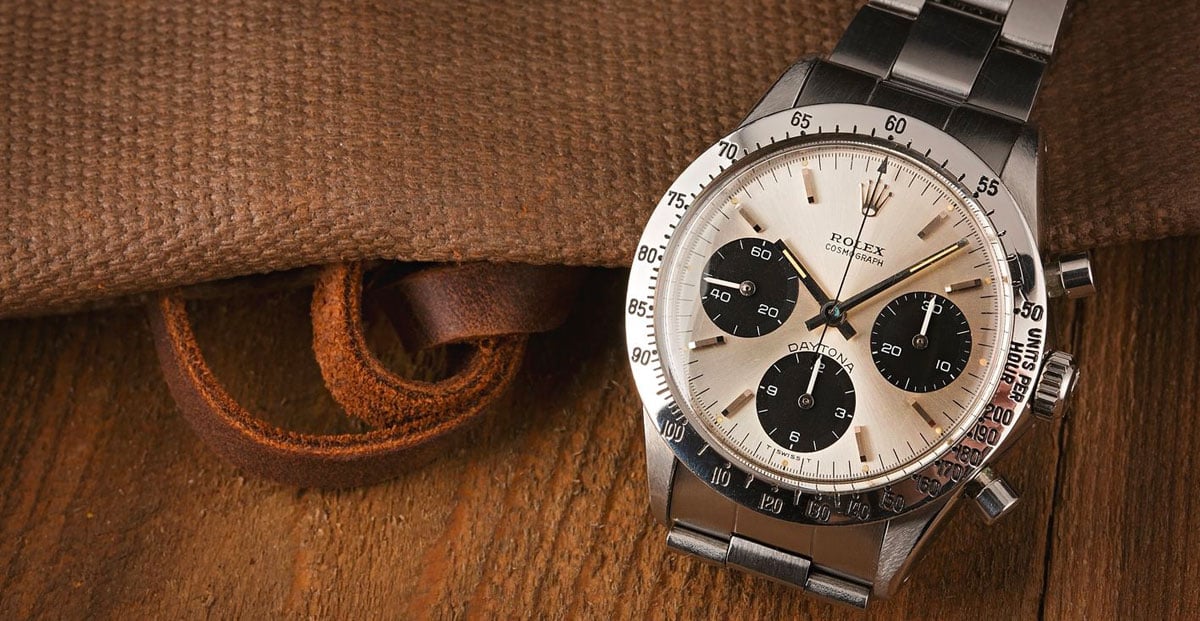
The Space Race between the U.S. and Russia was at its peak, and it is rumored that Rolex's choice of the name Cosmograph rather than chronograph was their attempt at catching NASA’s eye and winning their place aboard the Apollo missions; however the Omega Speedmaster ultimate became NASA's go-to space watch just two year's later, cementing the Speedmaster's remarkable legacy.
In 1988, the second major generation of the RolexDaytona arrived sporting an automatic movement for the first time: a heavily-modified version of the El Primero from Zenith. By this point in time, automatic chronographs had been around for nearly two decades and digital quartz watches had become commonplace. Despite this, the new generation of self-winding models were a greater success with the public than their manually would counterparts.
Rolex launched a third generation of Daytona watches in 2000, which featured the brand's first in-house chronograph movement. Since then, demand and prices have steadily grown, and today that massive appeal is still there - arguably more than ever before, with multi-year waitlists for the classic stainless steel model existing at virtually every authorized retailer.
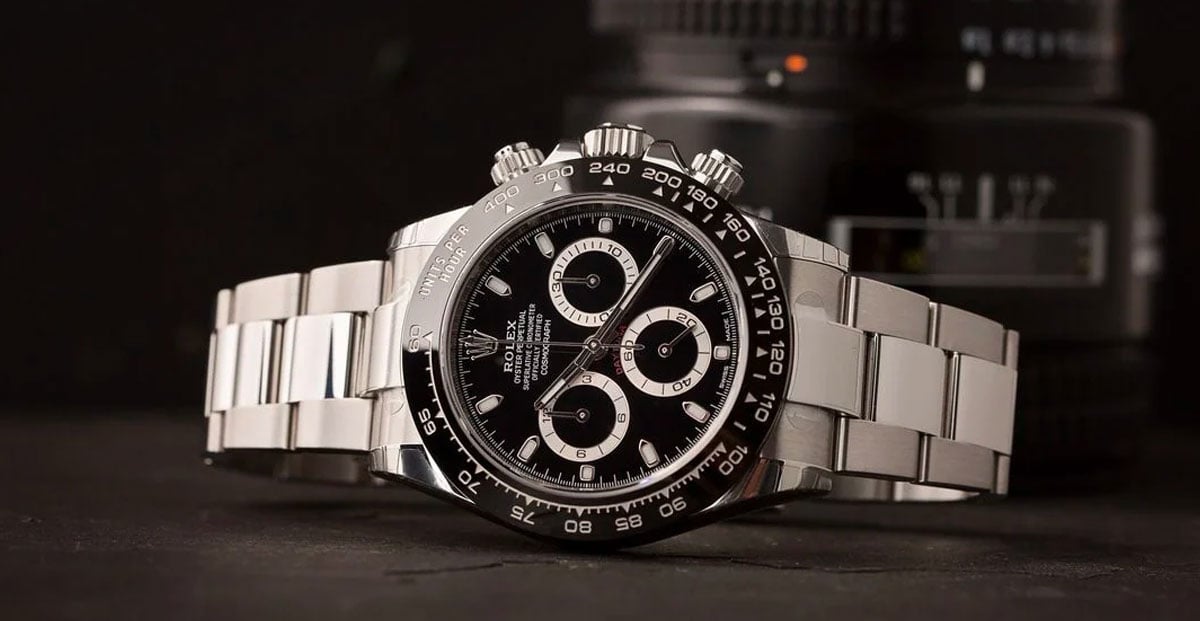
Rolex Daytona vs. Omega Speedmaster Today
So how do the current versions of the Rolex Daytona and Omega Speedmaster stack up against each other today?
The third wave of the Daytona watches arrived in 2000, with its first in-house movement, the Cal. 4130. Of all Rolex’s sports watches, it has the widest variety of styles, forged in all three shades of gold, stainless steel, and even platinum. However, it is the steel pieces which have become some of the most sought after watches in existence with waitlists for current-production models reaching several years in length.
As for the Speedmaster, it too is available in the same flavors of gold, along with stainless steel and several all-ceramic options. (On the Daytona, a patented ceramic known as Cerachrom is used only on the occasional bezel). But although Omega has tightened the collection up in recent times, the Speedmaster name is still used on more than 70 different models, taking in all manner of styles, including quartz pieces with analog/digital hybrid displays that are a world away from the original model.
Even the Moonwatch, the series descended from the original Omega Speedmaster that really made the model’s name, can now be had with moonphase complications, double or triple registers, with or without a date function, Co-Axial or non-Co-Axial movements. While options on the Rolex Daytona are limited to materials, dials, bezels, and bracelets, the Omega Speedmaster can be founded in various sizes, and with countless different movements and configurations.
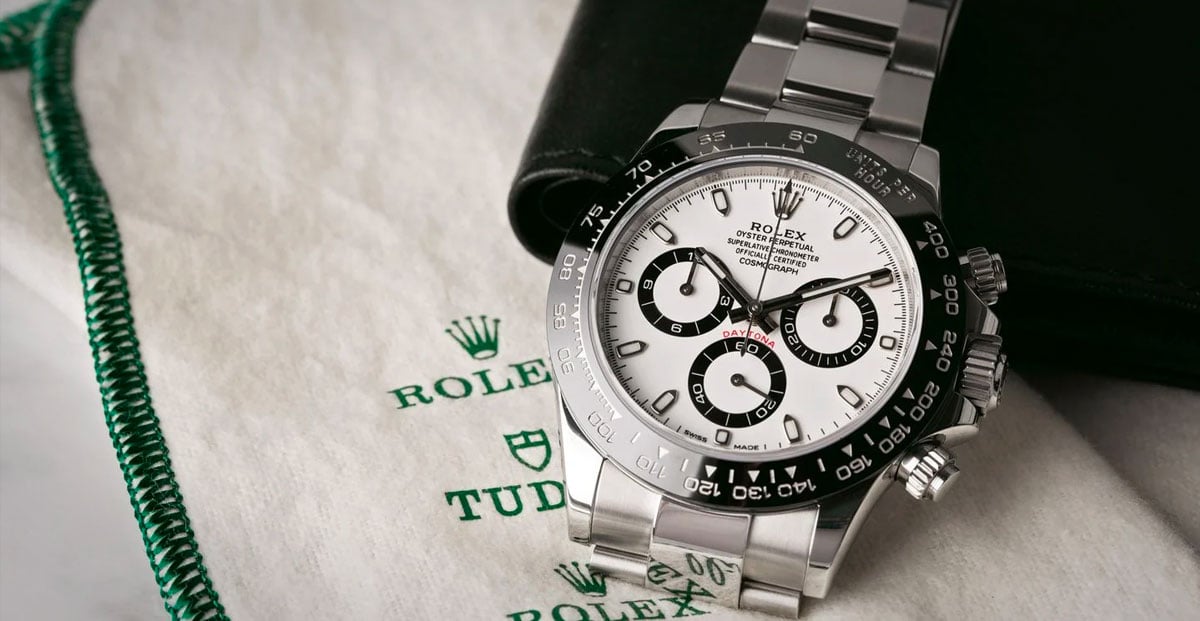
Head-To-Head: Rolex Daytona vs. Omega Speedmaster
Concerning the question of Rolex Daytona vs. Omega Speedmaster, comparing like for like is not that easy. In its entirety, the contemporary Daytona range consists of fewer than 50 models. That takes in pieces made from everything from stainless steel to platinum, both with and without Rolex's ceramic Cerachrom bezels.
The most legitimate comparison we can make between the two chronograph watches is likening steel for steel. That gives us the Rolex Daytona ref. 116500LN versus the Omega Speedmaster Professional Moonwatch Chronograph 42mm (reference number: 311.30.42.30.01.005).
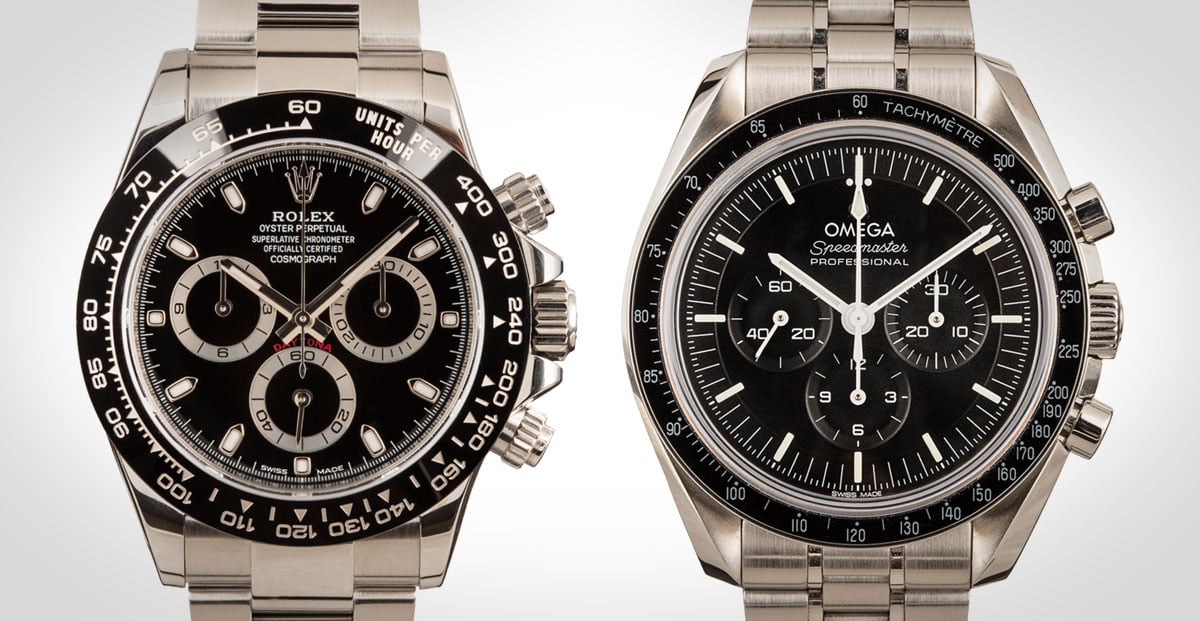
Daytona vs. Speedmaster Appearance:
In regards to the Rolex Daytona vs. Omega Speedmaster debate, appearance is very subjective, but one thing even the most ardent fans of either model can agree on is that we are talking about a pair of seriously good-looking watches.
Of the two, even though it is the larger piece at 42mm compared to the Daytona's 40mm, it is the Omega Speedmaster with the more vintage-inspired aesthetic. It has one choice in dial color: black with crisp white detailing for maximum contrast and readability. It is also the watch that will become more personalized to its owner over the years. That famous thin black bezel, barely changed in decades, is aluminum with a printed tachymetric scale, meaning it is going to be subject to fading and scratching, something that appeals to a lot of collectors.
By contrast, the Daytona has a busier look, more fancy and less tool-like. Still eminently legible, it comes in a choice of black or white dial versions. The sub-dial registers have distinct outlines to isolate them from the rest of the face, with an attractive snailing. The bezel is wider and made from Cerachrom, Rolex's own ceramic composite. Virtually impossible to scratch and highly resistant to fading, the Cerachrom bezel on the Daytona is likely to look like it is straight out of the showroom for a long time to come.
Aesthetically, both are definitely from the 'tool watch' category, with the Omega Speedmaster actually the sportier of the two. Almost everything is brushed steel, while the Daytona’s polished lugs and center bracelet links make it just slightly more dressy.
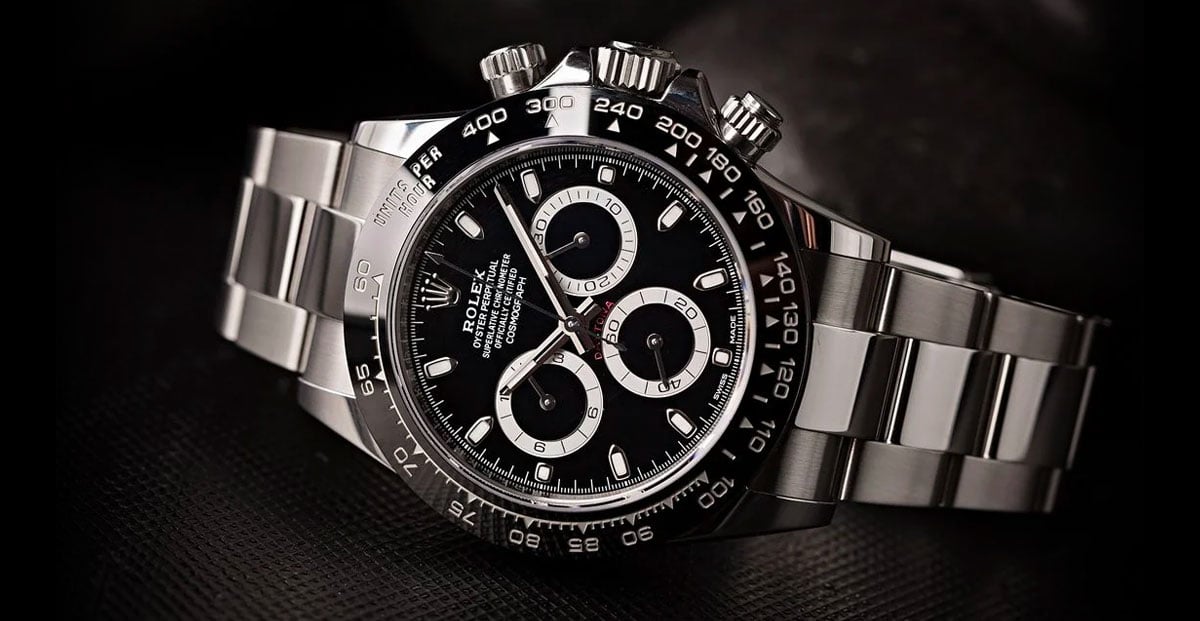
Daytona vs. Speedmaster Materials:
Concerning the Rolex Daytona vs. Omega Speedmaster debate, it is actually the two brands' choices in materials that have gone a long way in separating their chronograph models.
For the Daytona (like all other stainless steel models) Rolex uses their own proprietary stainless steel alloy known as "Oystersteel" - part of the 904L family. Incredibly tough and able to hold a polish unlike just about anything else on the market, Rolex is one of the few watchmakers with the financial and technical wherewithal to take advantage of its qualities. Omega doesn't publicize the type of metal it uses on the Speedy, but it is most likely 316L. Still perfectly appropriate for an out-and-out tool watch and also extremely robust, it is a less expensive metal and easier to machine.
As for the handset, Omega again uses steel while Rolex opts for 18k white gold. On top of adding just a touch of extra luxury, the gold hands that Rolex uses won’t ever rust or corrode. Rolex also crafts the surrounds for the hour markers in 18k gold for the same reason. Arguable more prone to creating glare or reflections than the white finished hands of the Omega Speedmaster, the polished gold hands on the Rolex Daytona made for a slightly dressier overall appearance.
The dial and bezel on the Omega Speedmaster have barely changed in decades, and the bezel is made from traditional aluminum, meaning that it is likely to pick up the odd scratch and fade over the years. The Rolex Daytona comes with either a black or white dial and its bezel is constructed from the company’s own Cerachrom ceramic, a material that is designed to look brand new fifty years from now, which takes away the chance of it picking up some characterful knocks along the way.
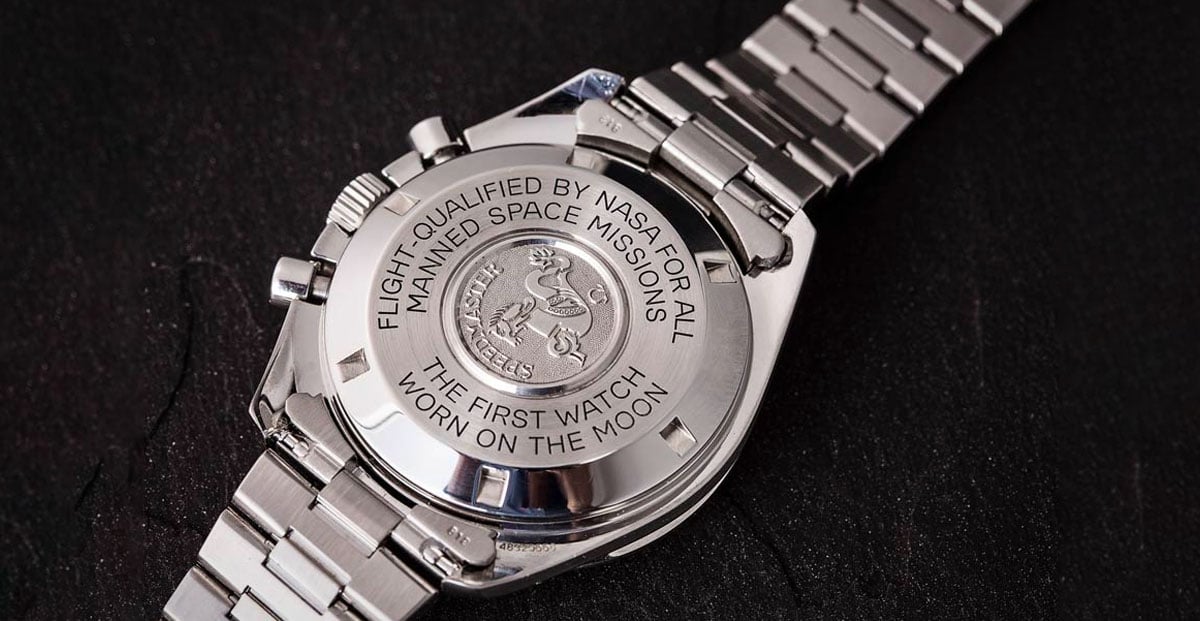
Daytona vs. Speedmaster Movements:
Inside is where most of the biggest differences lie. The Caliber 1861 that drives the Omega Speedmaster is the same one NASA has been using since 1996 for their official watches. It is basically identical to the Caliber 861 which is an evolution of the Caliber 321 that was inside Buzz Aldrin’s model on the first moonwalk, save for having rhodium-plated components rather than ones finished in copper.
The cal. 1861 is a manually-wound, 21,600vph chronograph movement has a 48-hour reserve. It is recognized as one of the most robust chronograph movements ever made, and its ease of servicing means that it's also a great friend of watchmakers everywhere. However, it is not one of Omega's revolutionary Co-Axial engines, nor is it chronometer-certified, being accurate to around -1/+11 seconds a day.
Impressive though that is, the 1861 is not chronometer-rated like the Cal. 4130, and it is still a manually-wound movement, while the movement in the Rolex Daytona is an automatic. In fact, there hasn't been a manually-wound Daytona since 1988. The Caliber 4130 is a column wheel-controlled caliber as opposed to the 1861's cam-actuated movement, and it employs a vertical clutch rather than a lateral one to eliminate hand slop on the chronograph's starts and stops. Additionally, with just 201 components, it has the fewest parts of any modern mechanism of its type.
The Caliber 4130 is also a Superlative Chronometer, accurate to within -2/+2 seconds a day, certified by Rolex themselves. And it was the first of the brand's creations to be fitted with the now standard-issue Parachrom hairspring. In every aspect, the Cal. 4130 is a high-performance machine.
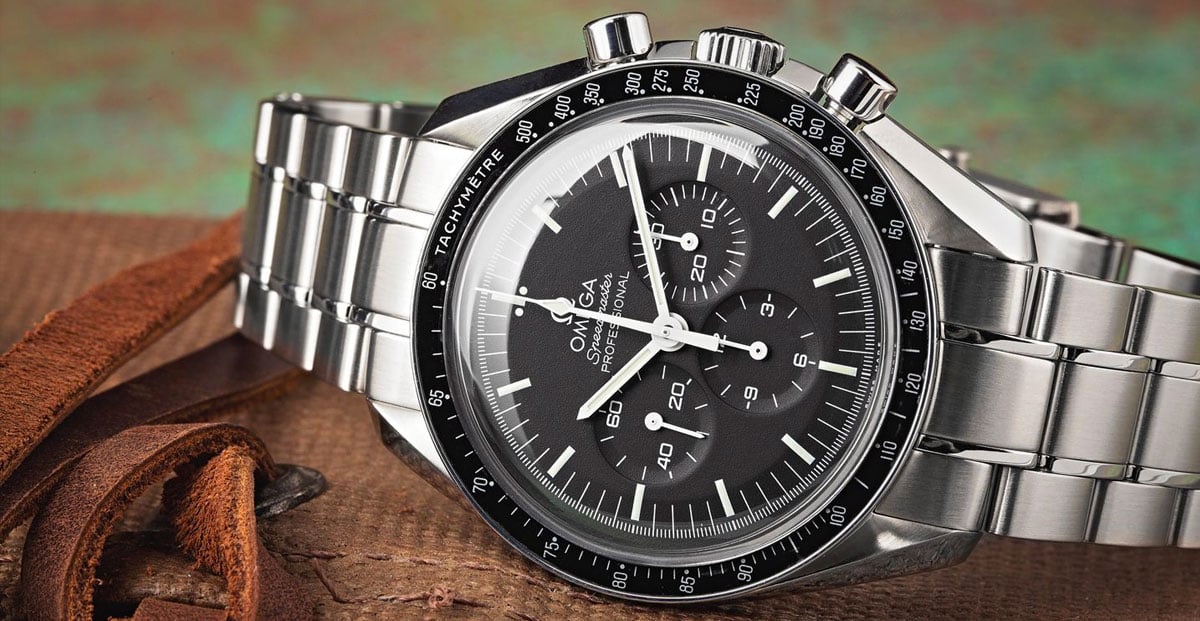
Price and Availability: Rolex Daytona vs. Omega Speedmaster
Theoretically, the price for a Rolex Daytona ref. 116500LN is $13,150. For the Omega Speedmaster, it is $5,350. So we already have a massive difference in cost. (Incidentally, that is not the cheapest Speedmaster, but it is the cheapest on a steel bracelet). However, that is only half the story.
Due to an overwhelming demand for stainless steel Daytona watches and Rolex's unflinchingly rigid policies of not ramping up production to meet the growing demand, the modern stainless steel Daytona has had a multi-year waitlist at dealers ever since it was first announced in 2016. That has left many people turning to the secondary market to purchase one, and prices have rocketed in recent years. Right now, you’d be lucky (suspiciously lucky actually) to find one for less than $20,000.
The one benefit to it all is that, if you do decide to bite the bullet and fork out so far above the odds for a Daytona, what you have bought yourself is one of the closest things to a rock-solid investment the horology world provides. Nothing short of a Patek holds value like a Rolex, and the financial performance of the Daytona is almost impossible to beat.
For the Omega Speedmaster, you not only stand a decent chance of getting one brand new at an authorized dealer, but you can also save yourself about 20% buying this year’s model pre-owned on the secondary market. Of course, the flip side of that is that the Rolex makes a better investment in the long run. You would be unlikely to lose money on it as you would with the Speedmaster (even if any loss would be relatively minor regardless) . So, as far as the money’s concerned, it is a bit of a double-edged sword. But what about everything else?
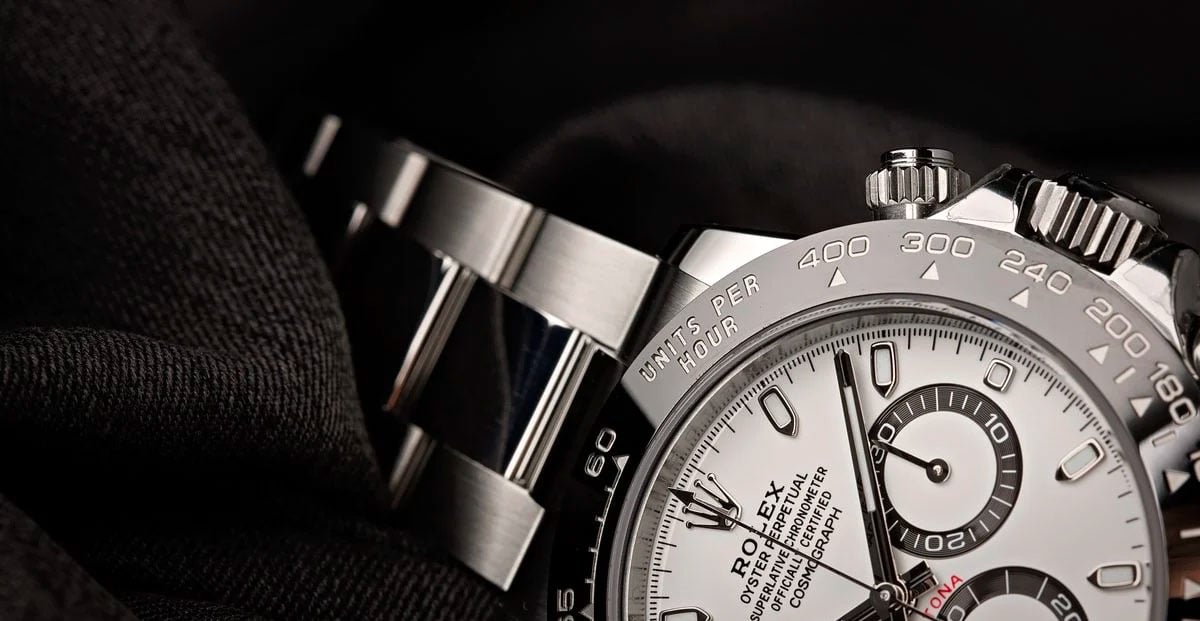
Final Thoughts: Rolex Daytona vs. Omega Speedmaster
While the history of the Rolex Daytona watch is filled with more variations than any of the other "Professional" watches in the Rolex catalog, it is always the same watch underneath. It, like the rest of the models in the brand's portfolio, is focused on perfecting its one job.
The Omega Speedmaster, on the other hand, has diversified wildly lending its name to all sorts of contraptions which have diluted its essence as a whole. While Omega has made efforts in recent years to tighten up their offerings, there is still something of a scattergun approach to all the Speedy versions. Moreover, Rolex doesn't go in for the whole special edition thing, whereas you can expect at least a handful of limited edition Omega Speedmaster watches each year.
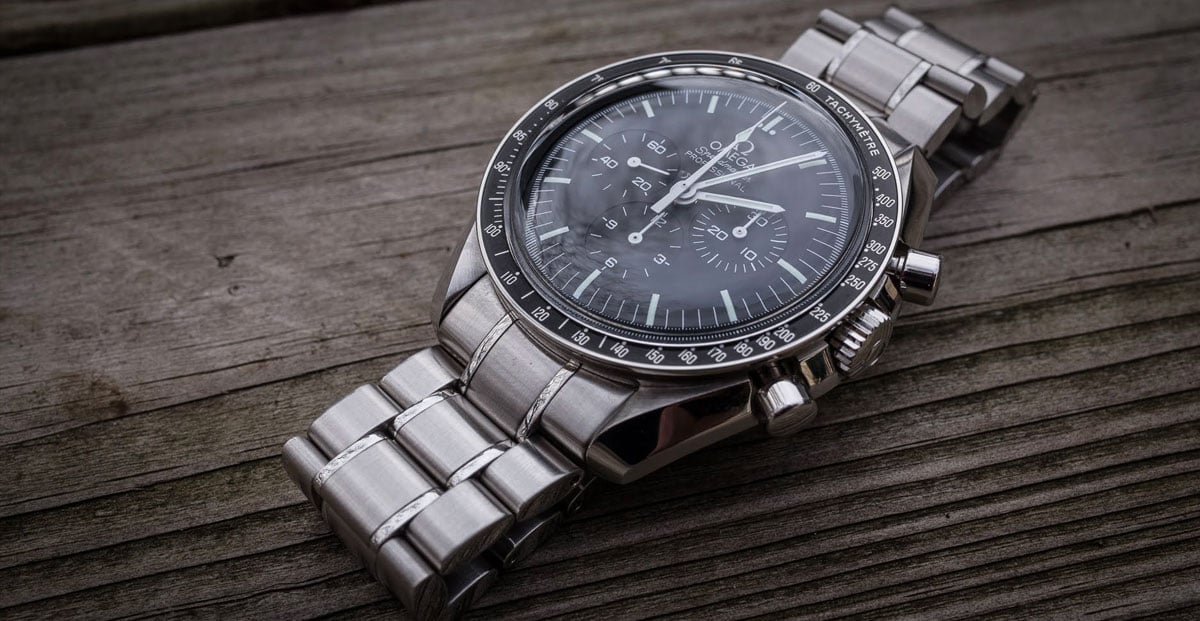
Both watches are absolute legends, two of the most established and widely-beloved names in the industry. They are each perfectly capable, with the Rolex maybe pipping the Omega Speedmaster in the performance stakes thanks to its superior movement. Then again, is there enough in it to justify picking one over the other just on their respective technical abilities?
Probably not, so it all comes down (as so often with luxury watches) to emotion. Which speaks to you most? The one with the literally stratospheric heritage, or the one that is the last word in earthbound glamor? The choice will always be a personal one, but one way or another, the decision will certainly ensure that you end up with an icon of horology in your collection.
What it all boils down to is here we have two universally renowned watches, one which is sensibly priced and attainable with a legacy that is truly out of this world, and one which tops it in the luxury and performance stakes and has a wrist presence which is second to none, but makes you pay and/or work for it.
The really good news though is that this is one of those incredibly rare moments when you cannot make the wrong decision. Whichever one you go for, you will be wearing a piece of horological history.
